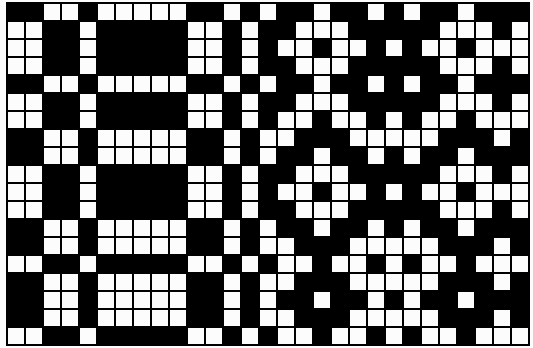
Isodipole textures were introduced by Julesz as counterexamples to his conjecture concerning preattentive visual processing. Subsequently, a number of variations on the original isodipole textures have been developed. This chapter summarizes the theoretical basis of the isodipole texture technique and describes some of the insights that have resulted from its use in the analysis of cortical processing of form.

We have described many of the salient findings that have resulted from the use of isodipole texture stimuli. Discrimination of isodipole textures implies analysis based on local (nonlinear) extraction of features, and not simply spatial-filtering operations. The spatial scale of these operations was identified by introduction of sporadic and propagated errors into the texture construction. Manipulation of spatial phase and modification of the recursion "glider" provided additional constraints for the spatial structure of form analysis. From these constraints and notions of biological plausibility, we developed a two-stage model for cortical form analysis, in which locally rectified signals are combined by a second nonlinear stage of larger spatial extent. Field potential and single-unit studies in the macaque indicate that these processes take place in V1, and co-localize with signals reflecting linear spatial filtering.
Investigation of the chromatic inputs to local feature processing through the use of chromatic isodipole textures and field adaptation studies leads to a complex picture of interaction of luminance and chromatic mechanisms. Incorporation of isodipole textures into motion stimuli provides an upper limit for the complexity of texture information which is available for motion processing.
The provisional model for local form analysis requires a dynamic adjustment of gains (or thresholds) based on local contrast. Exploration of the mechanism of this adjustment is likely to provide insight into interactions of visual submodalities and the operation of the cortical contrast gain control.